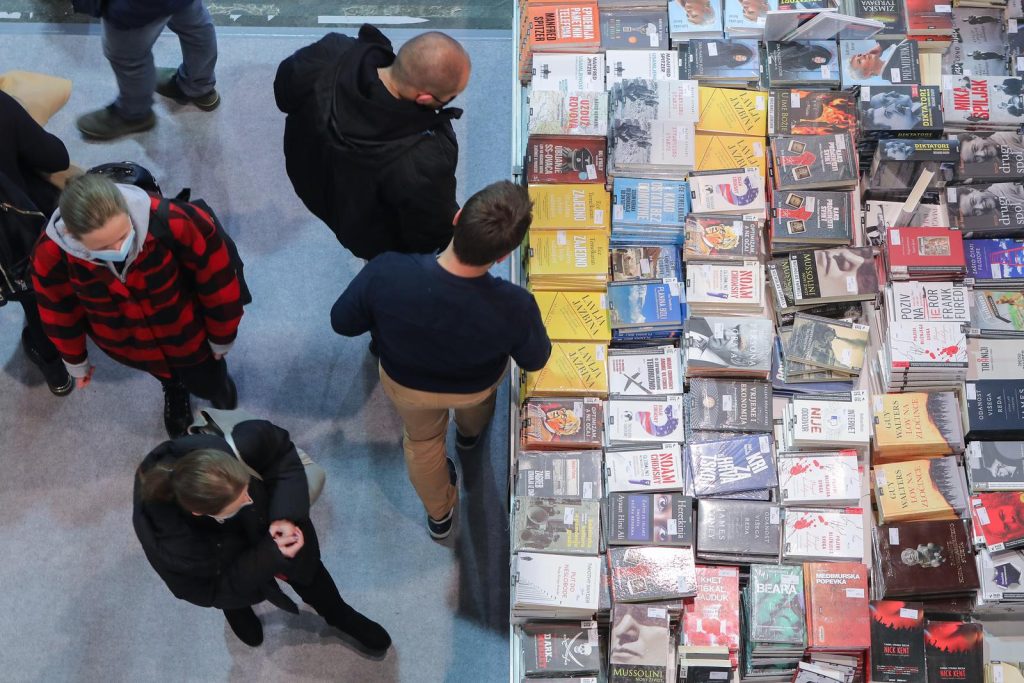As Poslovni Dnevnik/Josipa Ban writes, publishers have high expectations from Interliber 2022 in Zagreb, famous for being the largest book fair in the country. They have calculated that they will finally get closer to their pre-pandemic figures and one of the best years of the fair which took place back in 2019, when almost 150,000 people visited Interliber.
Interliber 2022 is the first “normal” year for Interliber, after it failed to be held back in 2020 due to the coronavirus pandemic, and last year it was held with the obligation of covid certificates, with only 55 thousand people visiting it. This year is naturally of great importance to publishers as this large book fair brings them from 5 to 25 percent of their annual income.
“Last year, sales were at the level of cost coverage. We expect this year to be at least 50 percent better. On top of that, we expect the results to rise and approach those from back in 2019. This edition should be dynamic, both economically and promotionally,” pointed out Slavko Kozina, president of the Association of Publishers and Booksellers of the Croatian Chamber of Commerce (HGK). The participation announcements this year are also significantly higher than they were last year, with as many as 66 publishers set to participate in the fair, more than last year. More precisely, 296 of them from an impressive 15 countries.
Among them is the Mate publishing house, which specialises in business literature and high school textbooks. They didn’t participate last year, because due to epidemiological measures and the limitation of the number of people at the fair, they estimated that it simply wasn’t worth it, according to Sanda Tomljenovic Polic, the editor and sales coordinator at Mate. They will be present at Interliber 2022, however, where they achieve a monthly turnover in just six days. However, Interliber 2022 isn’t important to them solely because of traffic, but also because it allows them contact with their customers.
“We sell through the web or via distributors, so this is a great opportunity for us to socialise with people and hear their comments for ourselves,” stated Tomljenovic Polic, announcing attractive discounts of 15 to 80 percent.
In addition, at Interliber 2022, Bernard Marr’s book “Artificial Intelligence in Practice” will be presented, in which the author provides detailed research on 50 companies that have successfully integrated AI into their business practices.
From Fraktura, which annually publishes about a hundred new titles, they have prepared 15 of them for Interliber 2022 alone. “I believe that the fair will be crowded this year,” Seid Serdarevic, editor-in-chief of Fraktura, is convinced.
“It’s a great source of income for everyone, and this will be especially important this year due to the increase in the prices of raw materials”, warned Serdarevic, pointing out that the price of printing is 40 to 60 percent higher this year compared to last year, while the price of paper has also shot up significantly.
“The jump in costs was caused by the global coronavirus pandemic, the Russia-Ukraine war and inflation, and all of this creates pressure on the final price of the product, i.e. the book,” said Serdarevic, adding that there has been a certain increase in the price of books in general, but that publishers are trying to minimise it so that physical books will continue to be affordable and available to Croatian buyers.
Although researches show that Croats don’t read all that much anymore, the fact remains that of all the creative industries, this publishing industry is the toughest. In the last five years, the Croatian publishing scene has gone through three major crises, the failure of Algoritm, then the 2017 Agrokor crisis, and recently the coronavirus crisis, and in the end they successfully overcame it all.
As far as sales are concerned, this year things were solid with a slight increase compared to last year. Slavko Kozina pointed out that the latest figures for the business year of 2021 showed an increase in income of five to seven percent compared to pandemic-dominated 2020. It is the industry that, according to him, employs about 3,200 people and annually generates a massive one billion kuna in revenue.
For more, make sure to keep up with our dedicated news section.











